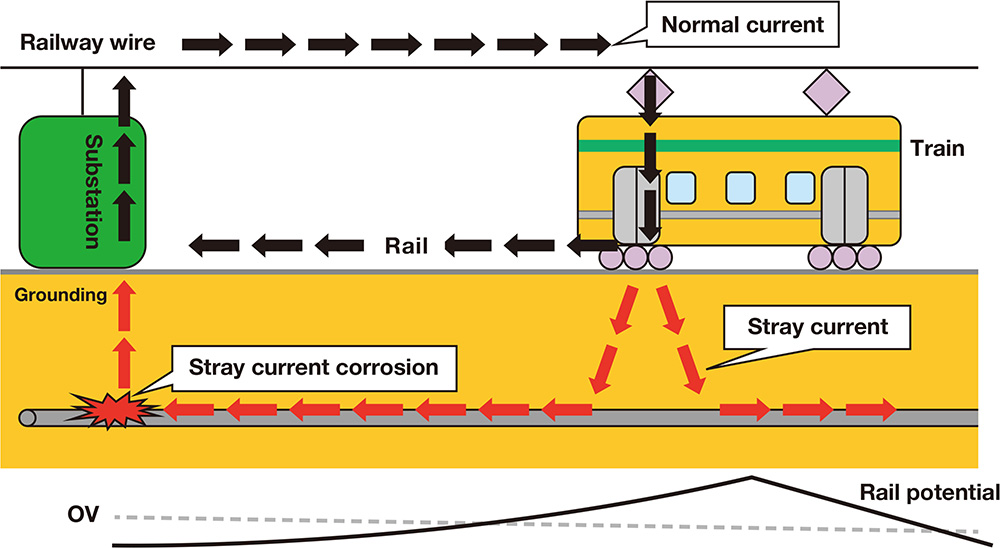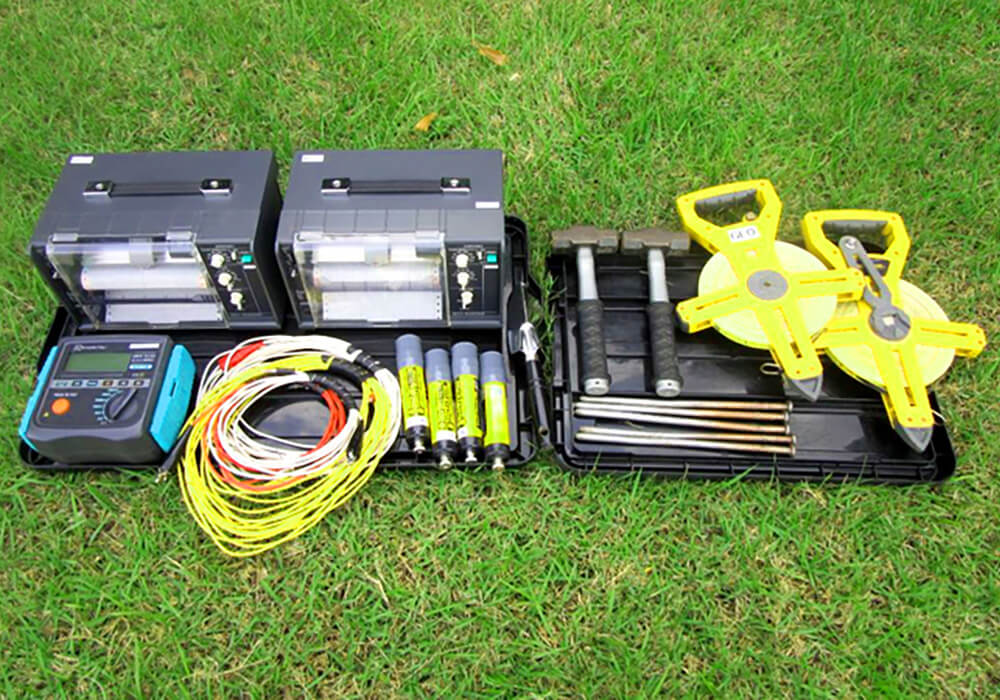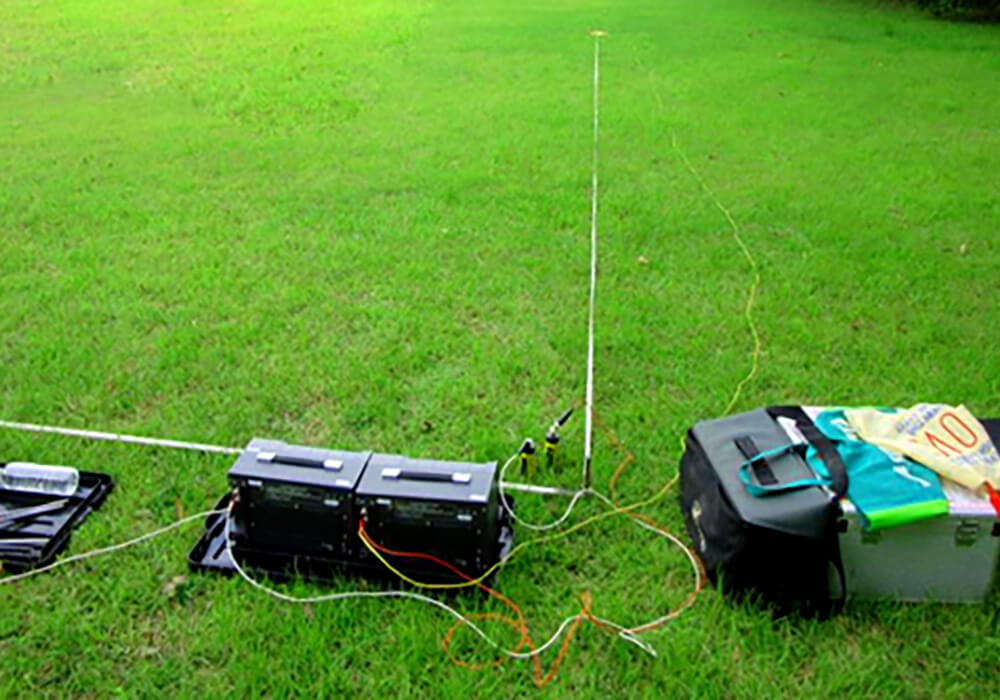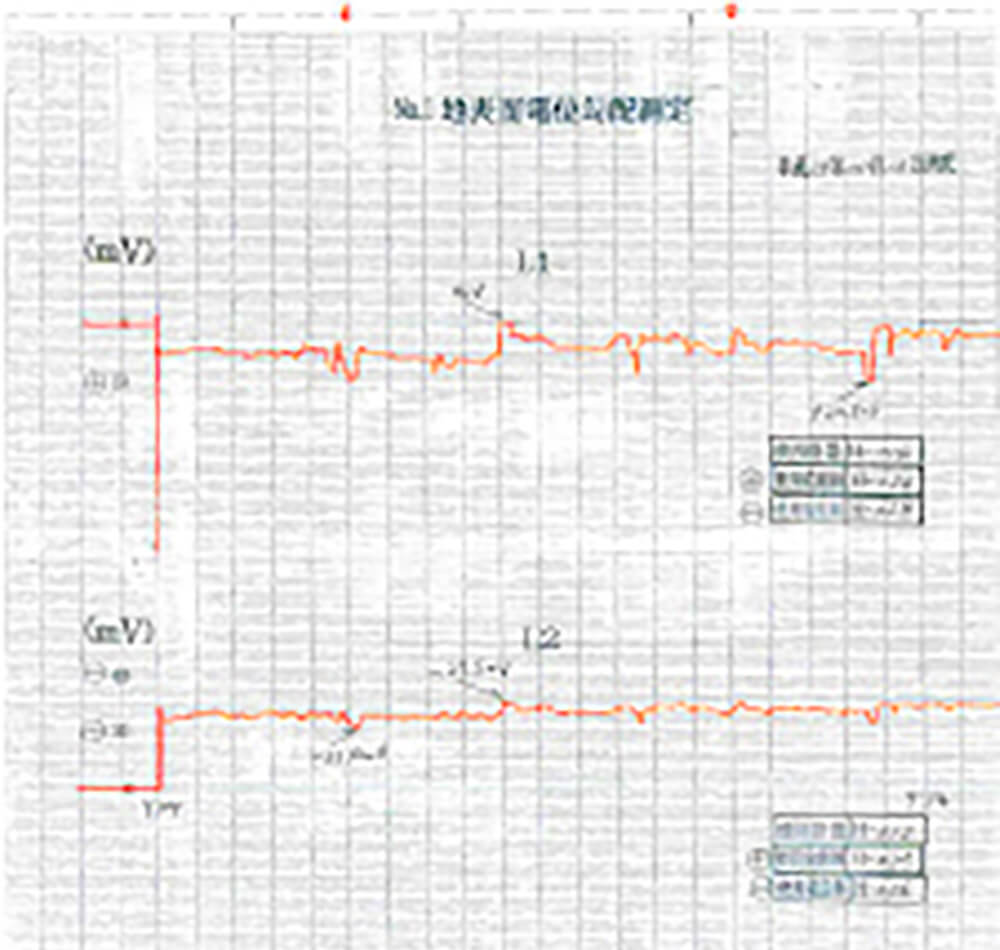In the vicinity of electric railroads that use direct current, electric corrosion may occur on equipment. Measurement of stray current is necessary when installing storage tanks for hazardous materials, etc. under certain conditions.
When a DC power source is used, such as in electric railroads, leakage current from the rails and other parts of the rail flow into the soil, and some of this current might flow into nearby buried pipes, tanks, and other facilities. In this case, when the inflowing current flows into the soil again, severe corrosion occurs in the material part in the short term. This leakage current is defined as stray current, and the corrosion phenomenon of the material is defined as electrical corrosion.
The mechanism of leakage current and electrical corrosion is shown in the figure below. Leakage current is caused by the potential difference between the vehicle and the substation due to the return current flowing in the rail and the resistance of the rail.

Mechanism of stray current and electric corrosion generation
<Legal Name>Fire Services “Public notice (No. 99 of 1974) to establish detailed technical standards for the control of hazardous materials.”
“Technical standards for the installation of electrical corrosion protection for underground piping.”
Scope of application of electrical corrosion protection
Underground piping, etc., installed in hazardous materials manufacturing facilities, etc., that may be corroded by stray current, and that is buried or installed in contact with the earth.
Locations where corrosion may occur

Measuring equipment

Measurement

Measurement results
In view of the above, it is necessary to measure stray current and earth resistivity.
In places where corrosion is likely to occur, underground storage tanks and underground piping require prescribed corrosion prevention measures.